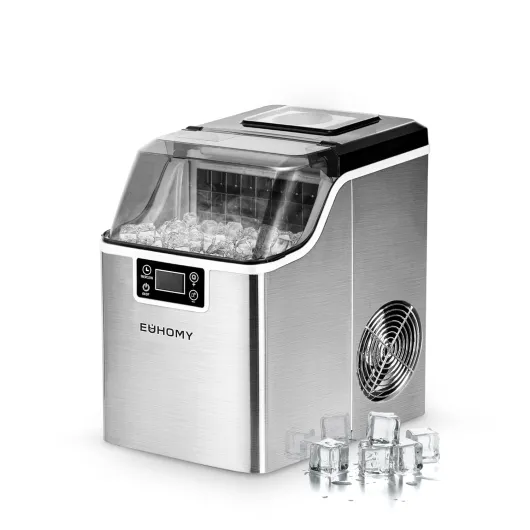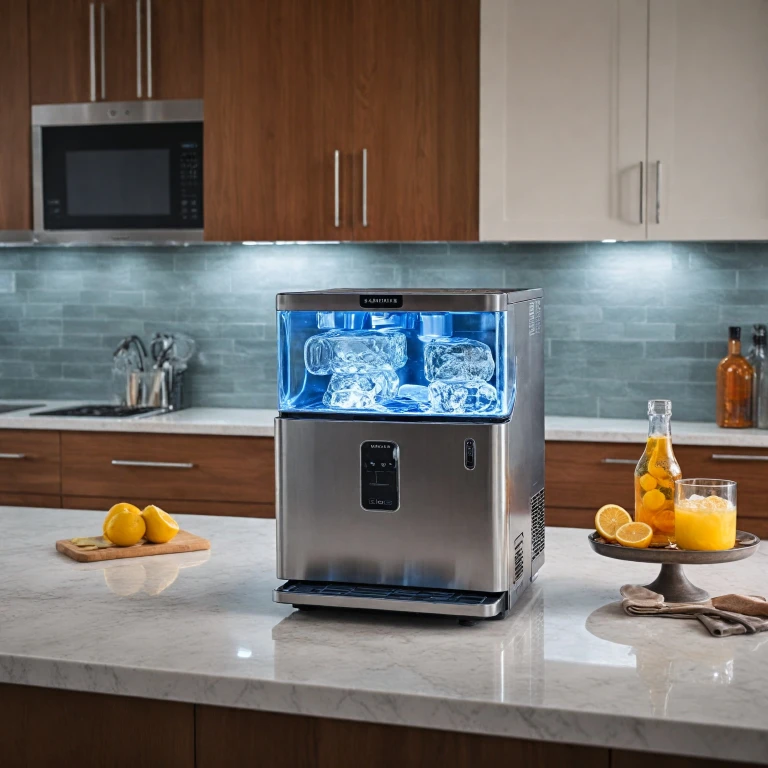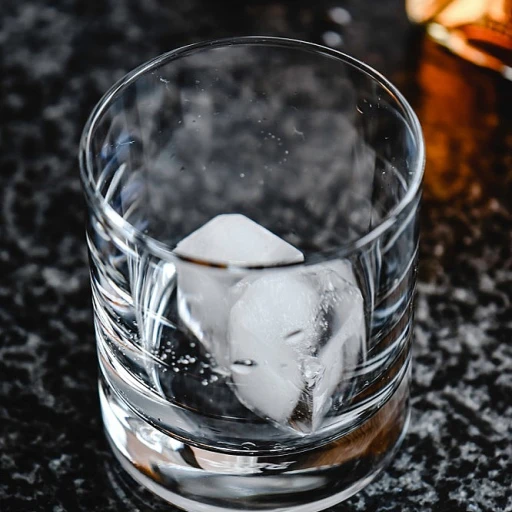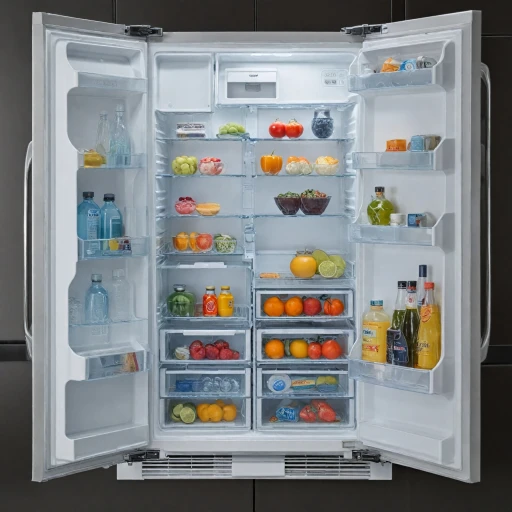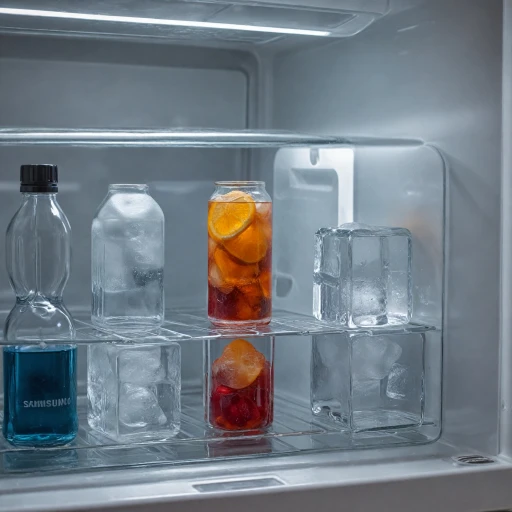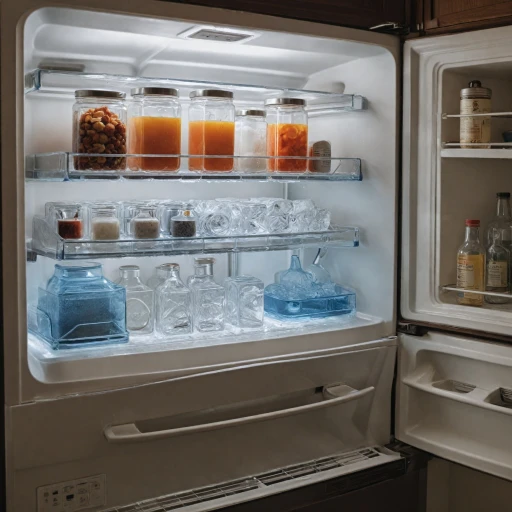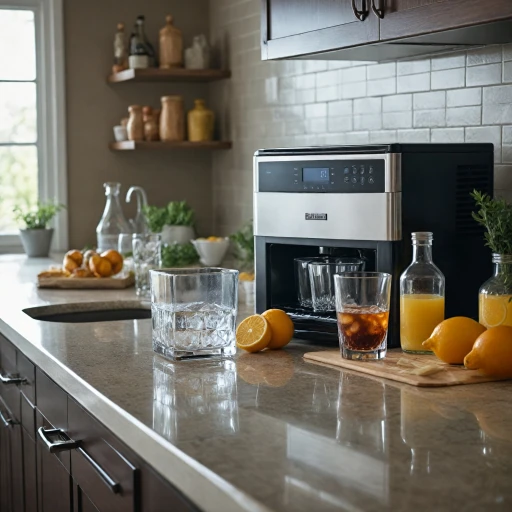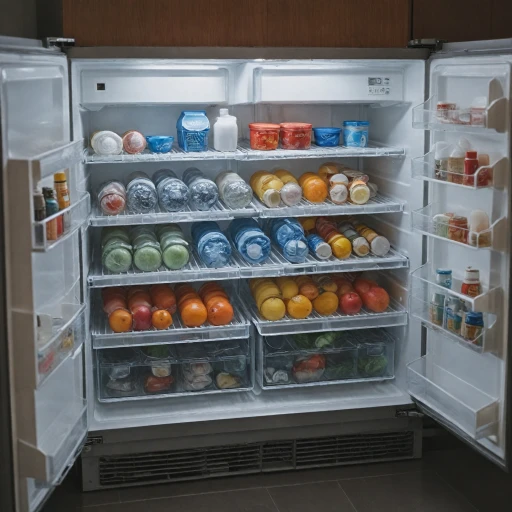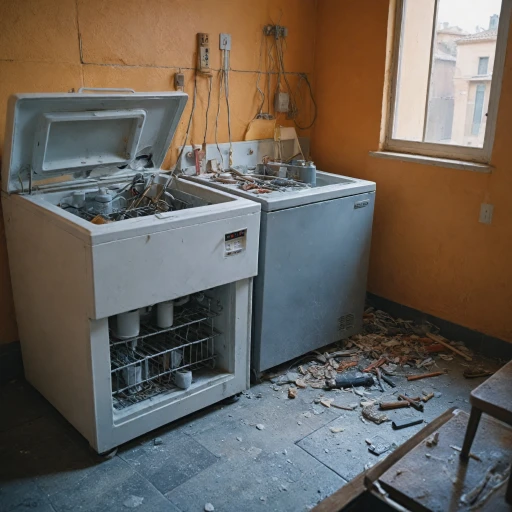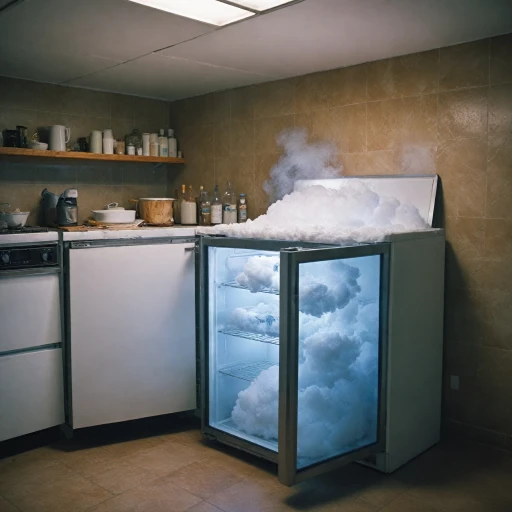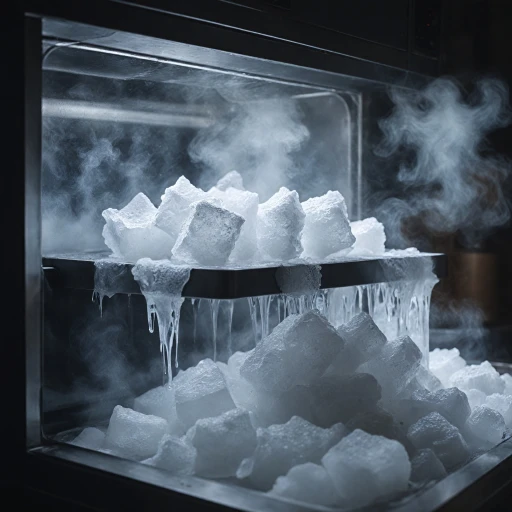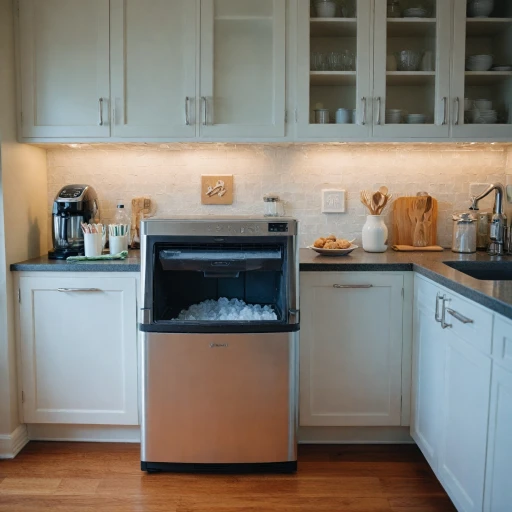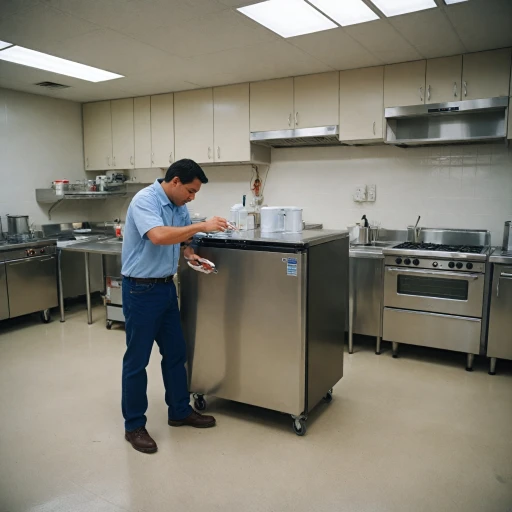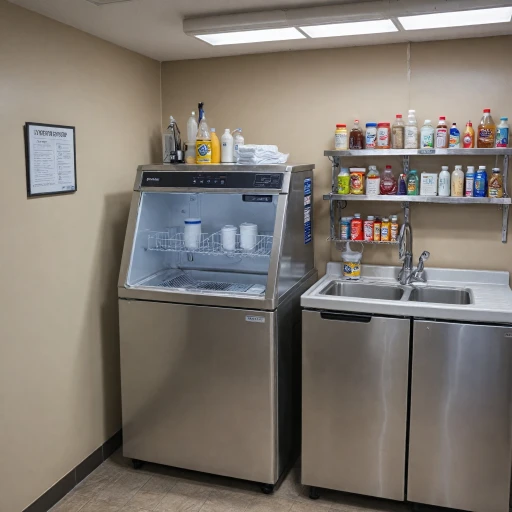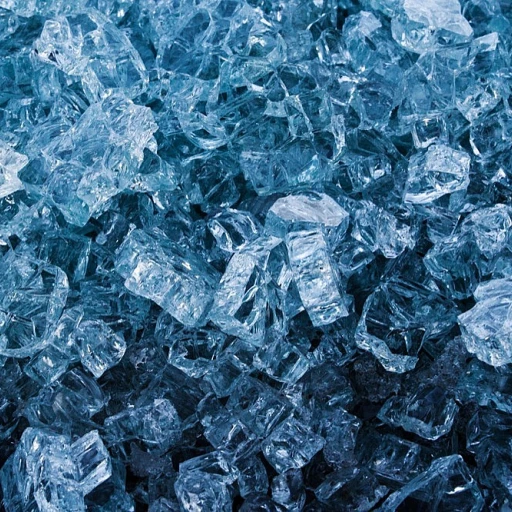
Understanding Your Ice Maker's Settings
Deciphering the Settings of Your Ice Maker
For those looking to enhance their ice production, understanding the settings of your ice maker is crucial. Each ice-making appliance comes with its own set of configurations that, when optimized, can significantly boost output. A crucial step is to become familiar with your specific ice maker model's manual as each manufacturer provides different options for making ice more efficiently.
Begin with checking the existing settings of your refrigerator’s freezer. The temperature plays a pivotal role in ice production. Generally, the recommended freezer temperature should hover around 0 degrees Fahrenheit. Anything higher can lead to slow ice production. If you're experiencing slow making, it might be worth readjusting to this setting.
Besides temperature, make sure the ice maker’s arm is positioned correctly. This little component can inadvertently halt ice production if it's stuck in the "off" position. Additionally, ensure your water filter is regularly replaced. A clogged filter can disrupt the flow needed for effective ice cubes generation.
For those searching for a straightforward approach to making ice every day, consider consulting further insights on how to make 26 pounds of ice daily with ease. This guide offers actionable tips on maintaining optimal ice production effortlessly.
Navigating through these basic settings and adjustments will prepare you better for enhancing your appliance's performance. If complications persist, it might be time to explore other factors like cleaning and maintenance, or investigating your water supply and its contribution to ice making.
Cleaning and Maintenance for Better Ice Output
Importance of Routine Cleaning for Optimal Ice Making
Regular cleaning of your ice maker is vital to maximize ice production. Over time, mineral deposits and impurities from the water supply can build up, which may reduce efficiency and slow ice creation. The refrigerator's freezer section, where the ice maker resides, thrives in a clean and clear environment to enhance its performance.Steps for Effective Maintenance
It's essential to establish a consistent cleaning schedule, ideally every few weeks, to maintain your ice maker's optimal performance. Here are some crucial steps:- Disconnect the appliance: Ensure your safety by turning off the ice maker and unplugging the fridge before cleaning.
- Clean the ice bin: Empty all ice cubes and wash the bin with warm, soapy water. Rinse thoroughly to remove any soap residue.
- Examine the water filter: Check for any signs of clogging or buildup, and replace the filter regularly to keep the water supply clean and flowing seamlessly.
- De-scale the ice maker: Use a mixture of water and vinegar or a commercial de-scaler to remove mineral deposits from the ice-making components.
Keep It Moving: Arm and Cubes
Ensuring the mechanism that pushes ice cubes into the bin, often called the arm, moves freely can prevent production slowdowns. Any obstructions or debris can hinder this movement, resulting in fewer cubes being produced.Ensuring Long-term Efficiency
A well-maintained ice maker will keep up with your ice demands without needing frequent appliance repair. Routinely cleaning and inspecting your ice maker ensures it works smoothly and responds efficiently to temperature settings and water supply adjustments. For more detailed maintenance tips and learning how to make soft serve ice cream to complement your ice production, consider browsing related resources. This holistic approach will not only help in making ice but also guarantee quick and efficient ice cube production that meets your needs.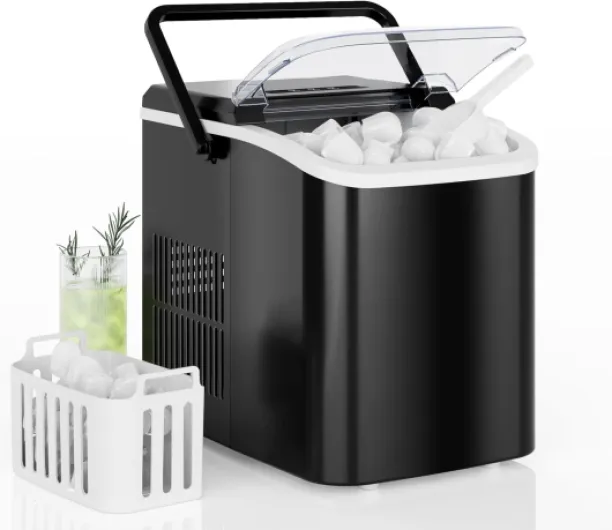
- + Fast Ice Production: 9 bullet ice cubes in just 6 minutes
- + Self-Cleaning Function: Easy maintenance
- + Portable: Ideal for home, kitchen, RV, and camping
- + Compact Design: Saves space on countertop
- + Quiet Operation: Doesn't disturb your environment
Adjusting Water Supply for Maximum Ice
Adjusting the Water Supply for Optimal Ice Production
When it comes to maximizing the ice production of your ice maker, the water supply plays a crucial role. Ensuring your appliance receives an adequate and consistent flow of water will significantly impact its ability to produce ice efficiently. Firstly, check the water line connecting your refrigerator to the water source. Any kinks or blockages can slow down the water flow, resulting in slower ice production. Straighten any bends and ensure the line is free from obstructions. Next, verify the water pressure. If your ice maker relies on a low-pressure water supply, it could lead to a diminished production of ice cubes. Consult your refrigerator's manual for the recommended water pressure level, and make adjustments as needed. It's also essential to check the water filter as a clogged filter can restrict water flow. Replacing the filter regularly, as per your refrigerator's guidelines, ensures that your ice maker has access to clean and adequate water supply. This practice is part of good maintenance and supports more efficient ice making. For reliable guidance on filter maintenance, this comprehensive guide offers helpful tips. In some cases, an issue with the water inlet valve can cause problems with ice production. The valve controls the water flow into the ice maker, and if it's faulty or improperly set, it could reduce the water necessary for efficient ice making. Testing and potentially replacing the valve may be necessary if you suspect a malfunction. If you've taken these steps and your ice maker is still making ice slowly, it might be time to seek professional appliance repair service. Addressing these common water supply issues will ensure your ice maker works effectively, ultimately maximizing ice cube production.Optimizing Temperature Settings
Ensuring Optimal Freezer Settings
One important factor in maximizing your ice production is adjusting the temperature settings of your freezer and refrigerator. The freezer temperature plays a crucial role in how quickly your ice maker can produce ice. Ideally, the freezer should be set at around 0°F (-18°C) for optimal ice making.
However, more precise adjustments might be necessary if you notice the ice maker working slow or producing smaller cubes. If the ice cubes appear to be smaller or hollow, it might be because the water is freezing too quickly before it has a chance to fill the tray completely. In such cases, try increasing the temperature slightly to ensure the water fully fills the cube molds before freezing.
Additionally, make sure the arm or sensor of the ice maker is not blocked by any items in the ice bin, as this might trigger a slow making of ice by falsely indicating the bin is full.
After adjusting the freezer temperature, give your appliance some time to stabilize and check again if the production improves. If issues persist despite finding the right balance in freezer temperature and maintaining the appliance, it might be time to inspect other elements or seek professional advice.
Troubleshooting Common Ice Maker Issues
Identifying and Solving Common Issues Affecting Ice Production
When dealing with an ice maker that seems to have slowed down, it’s helpful to identify and troubleshoot common issues that can affect ice production. Properly addressing these problems can have your appliance making ice efficiently once more.
First, check your water supply. A restricted or inadequate water supply can significantly hinder ice making. Ensure that the water line is not kinked and that the refrigerator's water filter is clean and functioning properly. It's worth noting that replacing an old or clogged water filter can often improve the flow of water to the ice maker, thus enhancing ice production.
If the water supply is sufficient, evaluate your freezer's temperature settings. An excessively warm freezer will slow ice cube production. Make sure the temperature is set to the manufacturer’s recommended level, typically around 0°F (-18°C) for optimal performance. A simple check and adjustment can make a significant difference in how efficiently your ice maker operates.
Keep an eye out for mechanical issues, such as a jammed ice maker arm or a malfunctioning ice bin. Sometimes, the arm might be stuck in the "off" position, preventing the ice maker from producing more cubes. Make sure everything is functioning correctly to help the ice maker work at its best.
Finally, consider appliance repair or professional service if the problem persists even after these troubleshooting steps. If you notice persistent slow making or the appliance seems to be improperly making ice, it may be wise to consult a professional who can provide technical support and repair any unresolved issues.
When to Seek Professional Help
Knowing When It's Time to Call for Expert Assistance
Despite your best efforts in adjusting settings and maintaining your appliance, there might be times when your ice maker requires professional intervention. Here’s how to recognize those moments and ensure your appliance runs smoothly.
- Persistent Issues: If your ice maker continues to malfunction even after adjusting the temperature settings, cleaning, and ensuring a proper water supply, it's wise to seek help. A professional can pinpoint issues that aren't obvious, such as faulty components or deeper repair needs.
- Unusual Noises: Unexpected sounds from your ice maker could indicate parts are not operating correctly. Consulting a service provider can prevent further damage, ensuring your ice production continues without interruptions.
- No Ice Production: Should your appliance stop making ice altogether, it's a clear sign that more than just a slow ice production issue is at play. An expert can diagnose if it's a problem with the ice bin, ice cube sensors, or even an internal malfunction.
- Water Leaks: If you notice water pooling around your fridge or ice maker, it might be due to a blocked or malfunctioning water filter, a situation that needs prompt service to avoid further complications.
- Efficiency Concerns: When an ice maker's performance drops unexpectedly even after troubleshooting common issues, having a professional check the appliance can restore optimal ice making before the problem worsens.
Remember, regular maintenance can prevent many issues, but when in doubt, a qualified appliance repair technician ensures your ice maker works efficiently and prolongs its lifespan. This approach minimizes costly repairs while maximizing ice cube production in your refrigerator.
-logo-retina.jpg)
